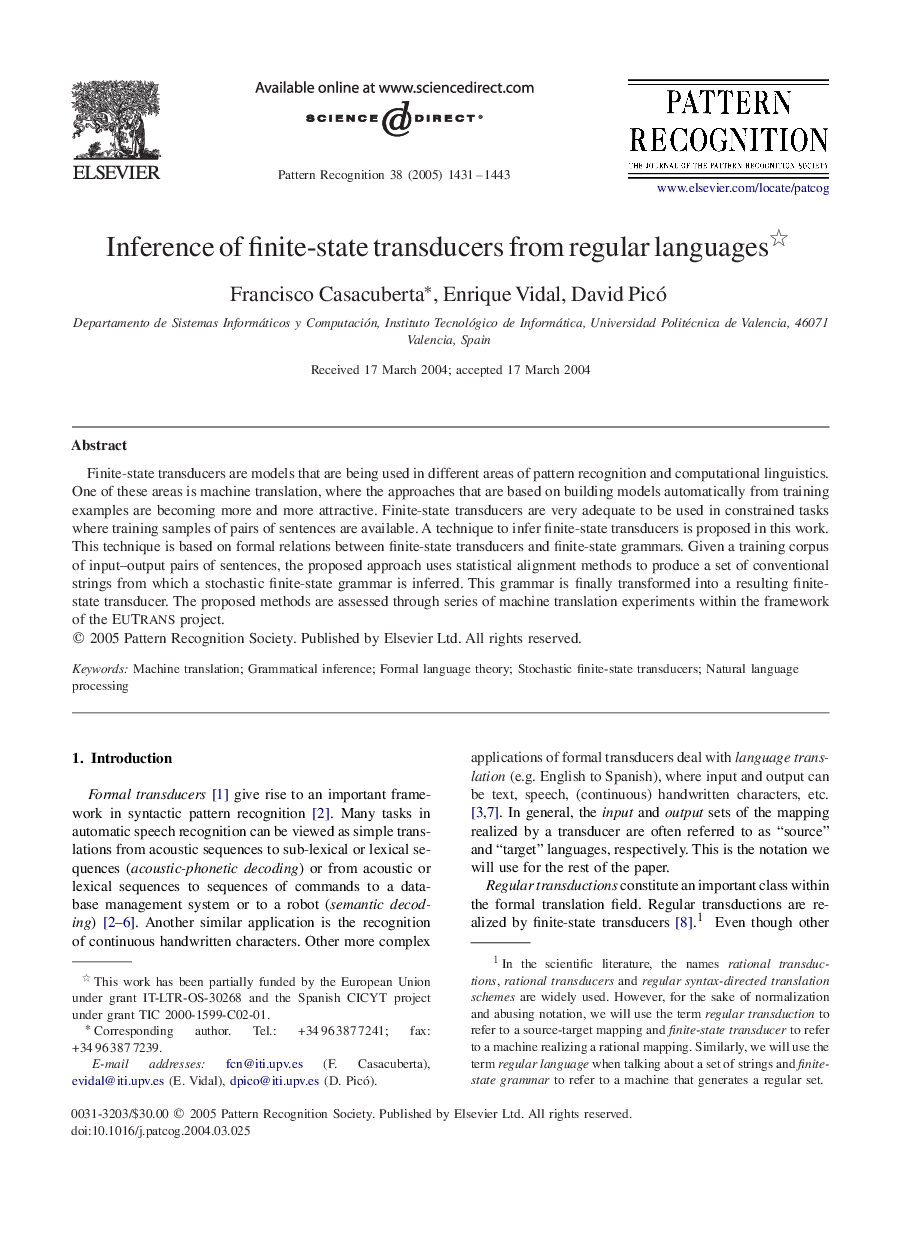| Article ID | Journal | Published Year | Pages | File Type |
|---|---|---|---|---|
| 10360636 | Pattern Recognition | 2005 | 13 Pages |
Abstract
Finite-state transducers are models that are being used in different areas of pattern recognition and computational linguistics. One of these areas is machine translation, where the approaches that are based on building models automatically from training examples are becoming more and more attractive. Finite-state transducers are very adequate to be used in constrained tasks where training samples of pairs of sentences are available. A technique to infer finite-state transducers is proposed in this work. This technique is based on formal relations between finite-state transducers and finite-state grammars. Given a training corpus of input-output pairs of sentences, the proposed approach uses statistical alignment methods to produce a set of conventional strings from which a stochastic finite-state grammar is inferred. This grammar is finally transformed into a resulting finite-state transducer. The proposed methods are assessed through series of machine translation experiments within the framework of the EUTRANS project.
Related Topics
Physical Sciences and Engineering
Computer Science
Computer Vision and Pattern Recognition
Authors
Francisco Casacuberta, Enrique Vidal, David Picó,
